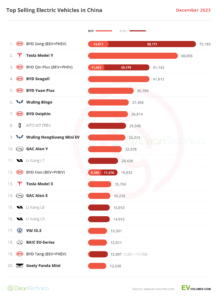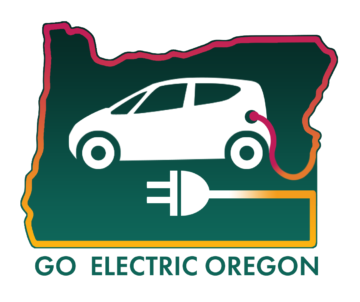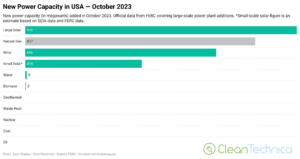As the EV industry grows, and more mainstream manufacturers jump in, we’re seeing less and less energy efficiency. If we really want a better future, we really need to challenge our current transportation paradigms and not just paper over their inefficiencies with giant battery packs.
EVs Used To Be Naturally Efficient
Even 5 years ago, EVs were a pretty rare thing in most places. 10 years ago, they were a rare thing everywhere. They were hard to not appreciate.
In 2011, there were only a few LEAFs, i-MiEVs, and Tesla Roadsters that had come out of factories. Beyond that, it was the Wild West. For most people, about the only way to get your own EV would have been to build your own in a garage, but that usually meant a car with 20-30 miles of range at best. The need to DIY it, combined with the lack of utility, meant that most people were still waiting for production to increase and prices to drop.
At that point in history, it made sense to encourage and support anything that was an EV. To be useful at all, these first EVs of the current era had to be small, efficient, and light everywhere except for the battery pack. They had to have great aerodynamic efficiency, lightweight bodies, and generally do anything they could do to eke out every last mile of range without costing millions. So, we really didn’t have to push the industry to make environmentally friendly EVs, because that just came naturally.
Now, Mainstream EVs Are Getting Less Efficient
Today, we’re seeing that trend come to an end as EVs go mainstream. Tesla is currently a leader in efficiency, with continued improvements in watt-hours per mile over time that lead to greater ranges with the same battery packs. In terms of watt-hours per mile, we’re seeing other manufacturers lose their way. The Hummer EV is going to weigh 9000 pounds, and most other EVs coming out have relatively small ranges for their battery size.
We’re fixing to see Tesla fall a few positions down the leaderboard, though. The upcoming Aptera is going to go around 1,000 miles on the same 100 kW pack that comes in a Model S (smaller batteries will be available, and still highly useful). Because it’s so efficient, it will be able to add a meaningful amount of range from on-board solar cells, making the vehicle largely grid-independent for most owners. Sono’s Sion and other vehicles are also joining the fray.
As automakers move into making electric trucks, this contrast between the mainstream and the companies focusing on efficiency will only become more stark. The Hummer EV is about the most extreme example, but other trucks will still have enormous battery packs. The F-150 Lightning is likely to land around 150 kWh, the Rivian R1T has 135 kWh of battery, and Tesla’s Cybertruck is going to come with a whopping 200 kWh battery as its highest option.
The Root Problem That Drives This: Baked-In Inefficiencies
The way that cars are built and used is rooted in a time when efficiency didn’t matter to people. There were abundant and cheap fossil fuels, and few were aware that burning copious amounts of them was creating a problem. Sure, political issues and oil crises made for improvements, but basic ideas in the automotive industry didn’t really get challenged.
Even as we transition to EVs, the basic shapes of cars, how we use them, and the basic idea of fueling them from an external source hasn’t changed. Batteries have come down in price, but instead of making cheaper EVs and more EVs, they’re just putting more and more batteries in them to make up for other poor choices.
If we don’t speak up now, the inefficiencies of the 20th century will get baked in yet again.
So What Should We Be Advocating For?
“I’m not going to support all EVs,” is something I commonly hear from Tesla fans. Sometimes, it’s because the other EVs are rather sub-par in terms of range, interior, etc.. Other times, people just prefer Tesla and don’t want to see the other manufacturers do things differently. In some ways, this general idea of not blindly supporting all EVs is right, but I think we need to fine-tune the criteria by which we decide whether an EV should be supported and encouraged by our community. Brand is less important than getting what we want in EVs hitting the market.
What we need to do is take a hard look at EVs and figure out whether they can reasonably be more efficient, or whether it would be better to use some other form of vehicle altogether. In other words, we should be encouraging a lot less wastefulness.
Idea #1: We Should Demand Better Efficiency Where Possible
The obvious thing we should encourage manufacturers to do is make more efficient vehicles so they don’t need giant battery packs to move them around. But we must be realistic.
Obviously, large packs are going to be needed for trucks that tow. Whether it’s a half-ton pickup pulling a boat or a semi-truck making forty tons of cargo down the road, a lot of energy is going to be needed to make that happen, regardless of drivetrain choice. It would be downright delusional to just say that a semi-truck driver should just switch to something smaller.
But, there’s room to question what’s being towed and find alternatives in many cases.
For carrying cargo long distances, trucks are about the worst way you could do it. They’re convenient (especially for just-in-time delivery) because they can carry things straight from door-to-door without having to load and unload at terminals or going from mode to mode. But carrying heavy loads on rubber tires means there’s a lot of rolling resistance.
Trains would be a much better alternative. Not only is there far less rolling resistance, but the tracks could easily be electrified, either with overhead wires or a third rail. Batteries either wouldn’t be needed at all, or relatively small packs could be used for buffering. Not all cargo could be shifted to rails, and we’d still need trucks for the “last mile” between the rail depot and origins/destinations, but we’d need a lot less battery production, charging infrastructure, and many other needs if more cargo went by rail.
United States waterways are also way underutilized. Not only is there also less friction moving cargo by barge and ship, but electrification can happen along those routes, too. To encourage this, the US DOT has designated “marine highways” so that people can know that there are alternatives to moving goods and materials by truck. Once again, trucks would be needed between ports and the final destinations, but a lot less energy would be used overall.
When it comes to commercial use, one big area that probably can’t be moved to rail are loads carried in rural areas and around farms. Being far from a rail terminal or port still means that many trucks will be needed.
In Part 2 of this article, I’m going to apply this idea to recreation and present more ideas of what we should be encouraging the industry to accomplish this decade.
Featured image: Stella Vita solar-powered RV (Image by Bart van Overbeeke and Solar Team Eindhoven)
Appreciate CleanTechnica’s originality? Consider becoming a CleanTechnica Member, Supporter, Technician, or Ambassador — or a patron on Patreon.

- 000
- 100
- Advertise
- advocating
- All
- AREA
- around
- article
- automakers
- automotive
- automotive industry
- batteries
- battery
- battery production
- BEST
- build
- car
- Cargo
- carrying
- cars
- cases
- challenge
- charging
- cleantech
- Cleantech Talk
- coming
- commercial
- community
- Companies
- Creating
- Current
- delivery
- Demand
- Diy
- driver
- Drop
- efficiency
- Electric
- energy
- energy efficiency
- environmentally friendly
- etc
- EV
- Farms
- Figure
- First
- form
- fossil fuels
- future
- General
- good
- goods
- great
- Guest
- history
- How
- HTTPS
- idea
- image
- Increase
- industry
- Infrastructure
- issues
- IT
- jump
- large
- last mile
- lead
- light
- lightning
- load
- Long
- Mainstream
- Making
- Market
- materials
- model
- move
- Oil
- Option
- Other
- owners
- Paper
- Patreon
- People
- Pickup
- podcast
- poor
- ports
- pounds
- present
- price
- Production
- pulling
- Rail
- range
- rubber
- Rural
- Rural Areas
- sense
- Size
- small
- So
- solar
- solar-powered
- States
- support
- Supported
- Switch
- Tesla
- time
- tires
- tons
- transportation
- truck
- Trucks
- us
- utility
- vehicle
- Vehicles
- weigh
- West
- words
- years






